Team Africa
Day 2 - A team is born
First morning
We’d have one more session as a contingent of 3. The regular start time would be 4:30am, and this first morning was a pleasant one – clear skies, not too chilly, a slight wind, the crescent moon setting on the horizon.
From the beacon we get bearings for the lions, MLF4 and MLF5 are still near the boma. In the dark, stars still twinkling, we find them, so close to the road that the bucky’s headlamps illuminate their eyes. This pride consists of 3 adult females, a sub-adult male and a juvenile, for which there remains some debate about the mother. MLF4 had a large belly, she was pregnant, the result of an incestuous relationship with her recently deceased son. The lions relaxed, and the dawn chorus began, flappet larks clapped their wings besides us. When the sky brightened the lions left, disappearing into the hills.
WD2 is the larger of Mkhuze’s two wild dog packs. It’s 12 strong with rumours of denning and the possibility of puppies. However they traditionally stay in the south of the reserve, and given current circumstances getting there is difficult. A long term roadworks project is underway, and the main road south is blocked by ongoing bridge works. Right now their signal is northernly, perhaps we might get visuals.
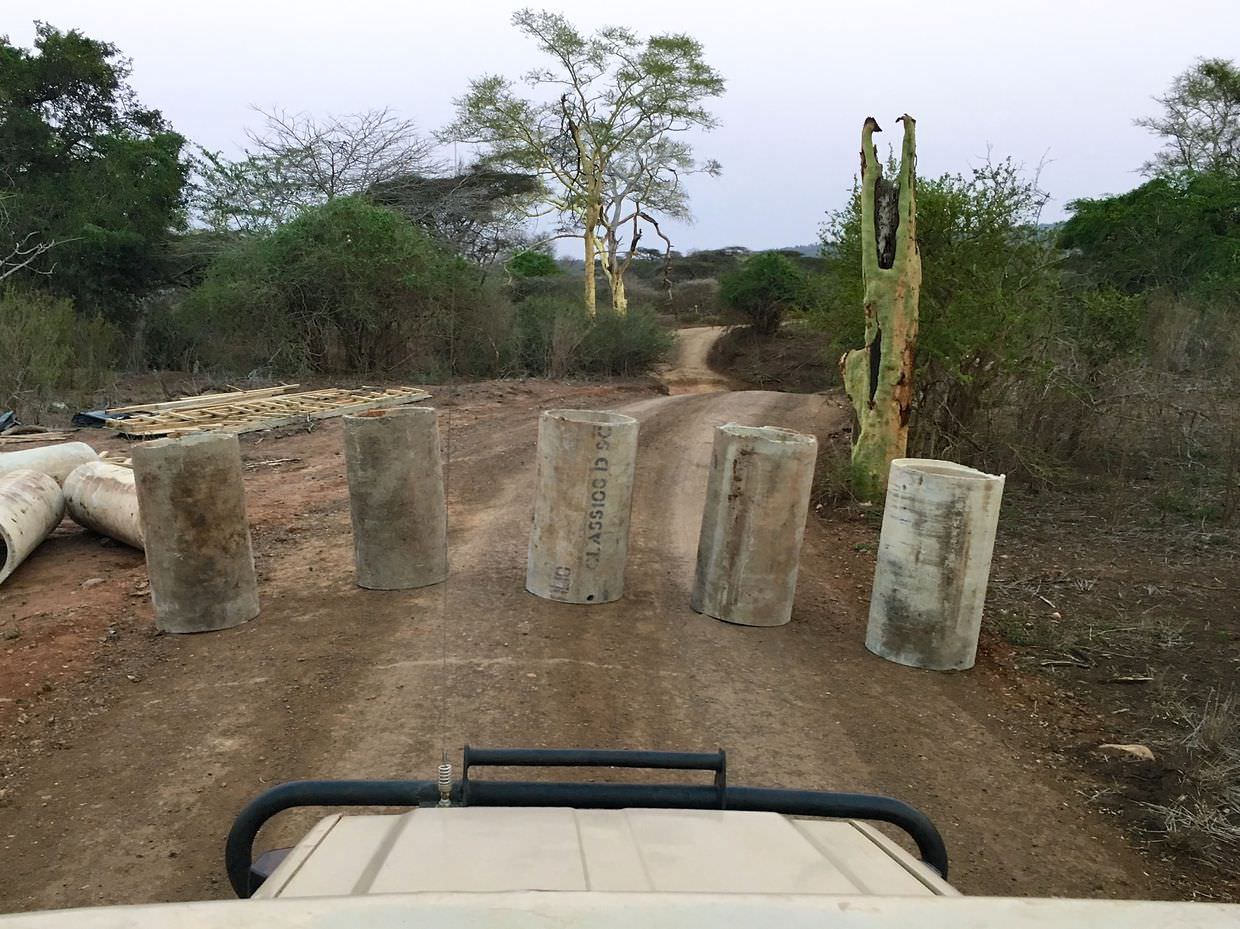
I’m scanning, and we rush onwards, wherever the signal takes us. Out to the Eastern hills, down a rarely used management track, rocking from side to side, up and over bumpy dirt ramps. Giraffes trot away, and wildebeest run by. We keep driving until the signal reaches 9 o’clock. Now it’s a waiting game, they could hunt this way, we could see them. Sunbirds, flycatchers and drongos flit about the trees while we wait. The strong signal, 7 bars, maximum, begins to fade; they’re going the wrong way, the signal stops and they’re gone. PJ is disappointed, he knew this was an opportunity missed.
This morning’s session is cut short, we need to meet our new volunteer, Kelly, at camp. On the tar road home we spot a feeding elephant bull and a hoopoe flies into and out of a nest – calling to its mate, “hoo-poe, hoo-poe”. A zebra stands by itself, it eyes us as we rattle past. In the road a hinge-back tortoise, making a brave crossing, it’s camouflage failing against the black tar.
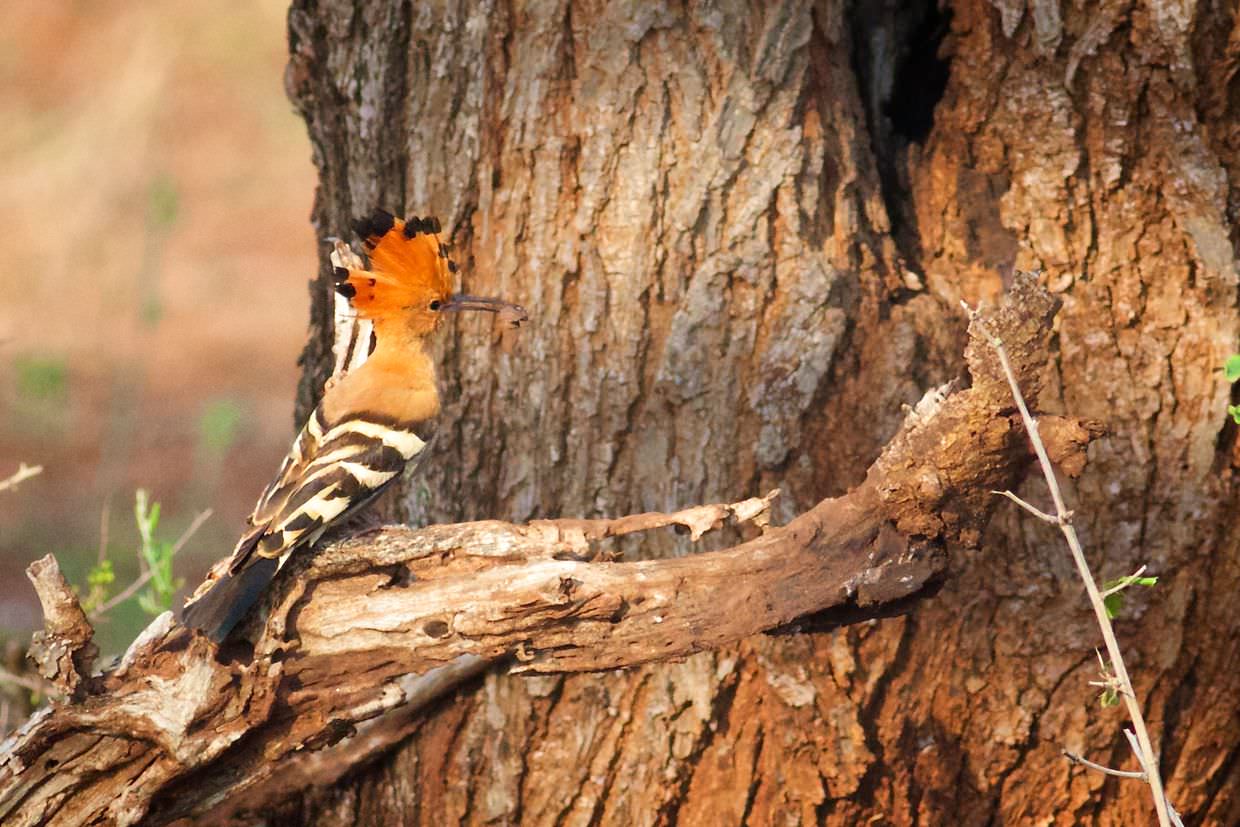
Kelly arrived after a stopover at ZRR, coming from the Panthera project at Eastern Shores (lots of camera traps studying leopards). We would eventually be 5; Brendan (or at this point, “Brandon”) would join us at the end of the week. Cue the Wildlife Act introduction video by Jo, and PJ’s presentation about Mkhuze.
Snaring
Mkhuze has a big snaring problem – over 2,000 are found a year. Poachers, many who are members of the surrounding communities, but not all, enter the park and leave metal snares to illegally catch bush meat. These wire cables hang between trees and create a slipknot that tightens as it’s pulled; game walk through, get caught and pull to free themselves – over days, weeks or months these wires tighten, cutting into their skin, then deeper still, creating deep wounds that disable the animal, or choke it. It’s a horrible and cruel way to die – one lion had a snare cut right through its stomach. Many of the poachers that set these traps do so for sustenance; they are communities with a history of “living off the land”, and “to a desperate man there’s no such thing as betrayal”. But others are known to create illegal butcheries, and as usual, it’s not so black-and-white.

Priority species such as lion, cheetah and wild dog get caught in these snares. Just the week before we arrived, when my friend Philippine was volunteering here – a snare killed one of the wild dogs – its collar kicked out a mortality signal, but it was too late, it was dead when PJ got there. The pack reduced from 4 to 3, Philippine scrubbed the collar clean and the dog was buried. Utterly devastating.
Poachers use everything they catch; an incidental cheetah kill will lead to the illegal sale of a cheetah hide; animal parts have value. On the magnetic map in the kitchen PJ highlights all the places dogs, cheetah and lion have been killed; snaring hotspots. Each death comes with a life story; many include orphaned cubs or abandoned pups.
Fixing boma electrics
The electrics in the lion boma were still shorting; a metal cable from the feeding slide keeps catching the perimeter lines. Our plan; cover it in a plastic sheath. For half an hour we sawed through a black pipe, prepping it for the job; then PJ fed it through the fence, onto the cable, getting electrocuted in the process, but it appeared to work.
The lions watched from afar, curious about this black thing being prodded into their temporary home. Within a few minutes they were chewing it, and as we watched they pulled it off, a wasted effort. PJ stood with arms on hips, we couldn’t help but laugh; hilariously annoying.
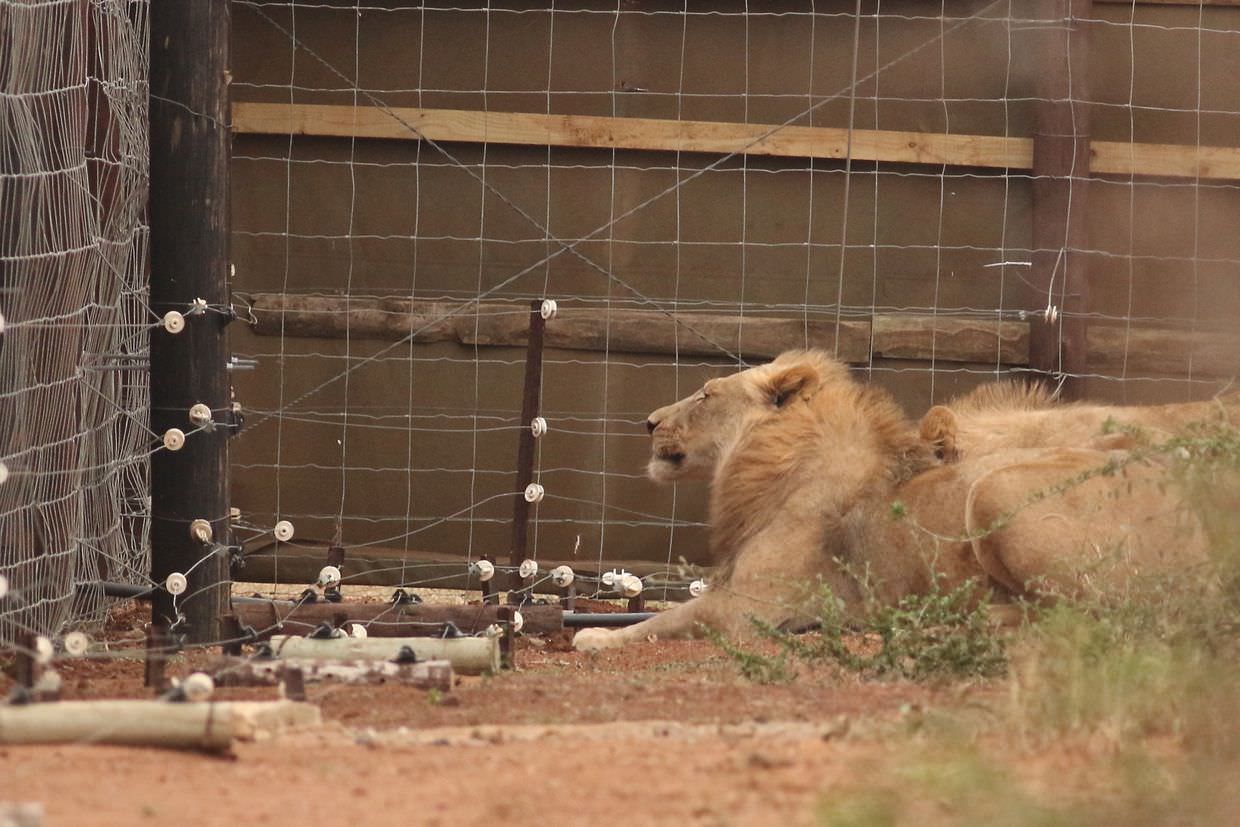
For the rest of the session we tried to find WD6. As we sped in their direction an African Green Pigeon flew over, a giraffe stood and stared so intensely that it didn’t notice us, we searched for its focus but saw nothing. Wildebeest ran alongside us. The dogs were moving in the south again, nearby, but the road works thwarted us again. No visuals tonight, we settled for a triangulation.
Cheetah brothers
On the way back we find ourselves behind the two male cheetah we’ve been tracking, MCM17 and MCM18. They’re using the tar road. In the dark they walk alongside us, before cutting in front, not seeming to mind our truck’s headlamps. In the light they walk together, stopping to sniff, stretch and scratch on a tree, then crossing and lying besides us in the dark. This is the first time I’d seen a cheetah that wasn’t alone; it was fascinating to observe the interaction of these two brothers.
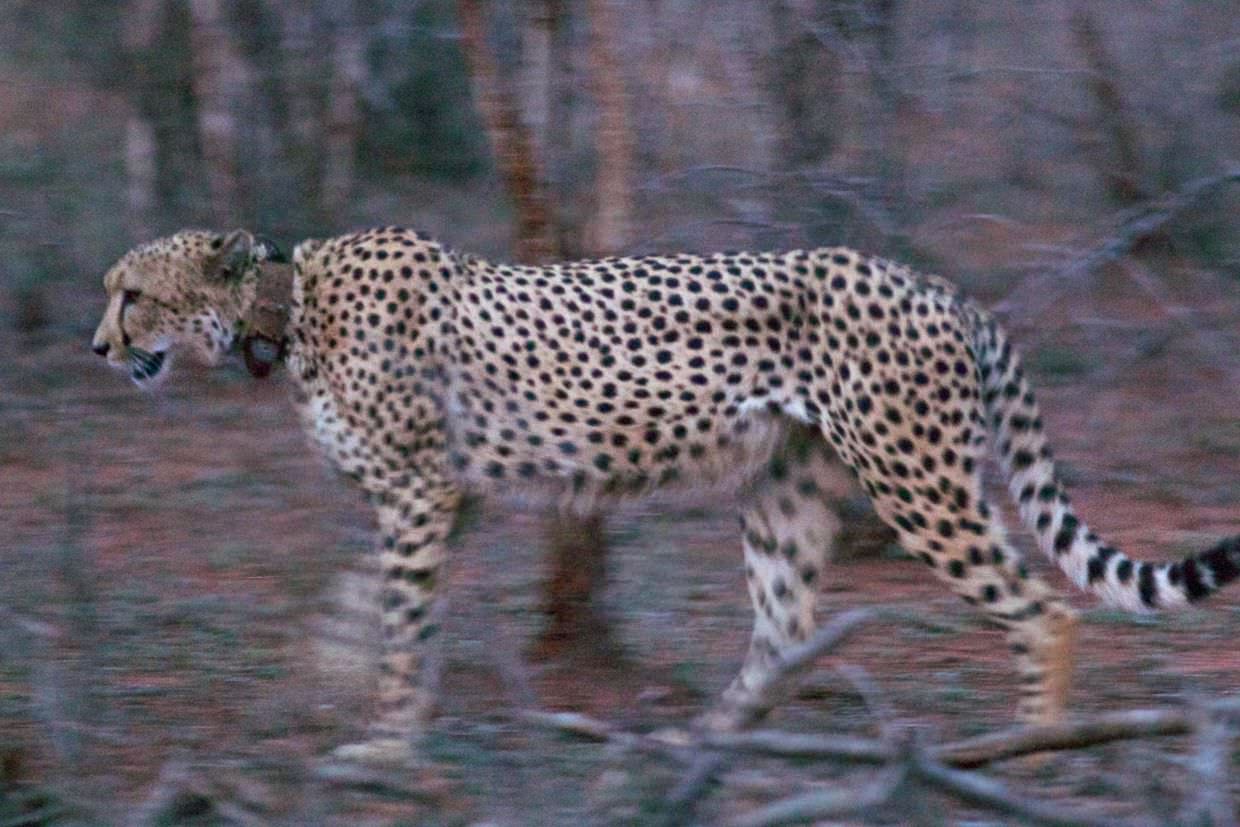
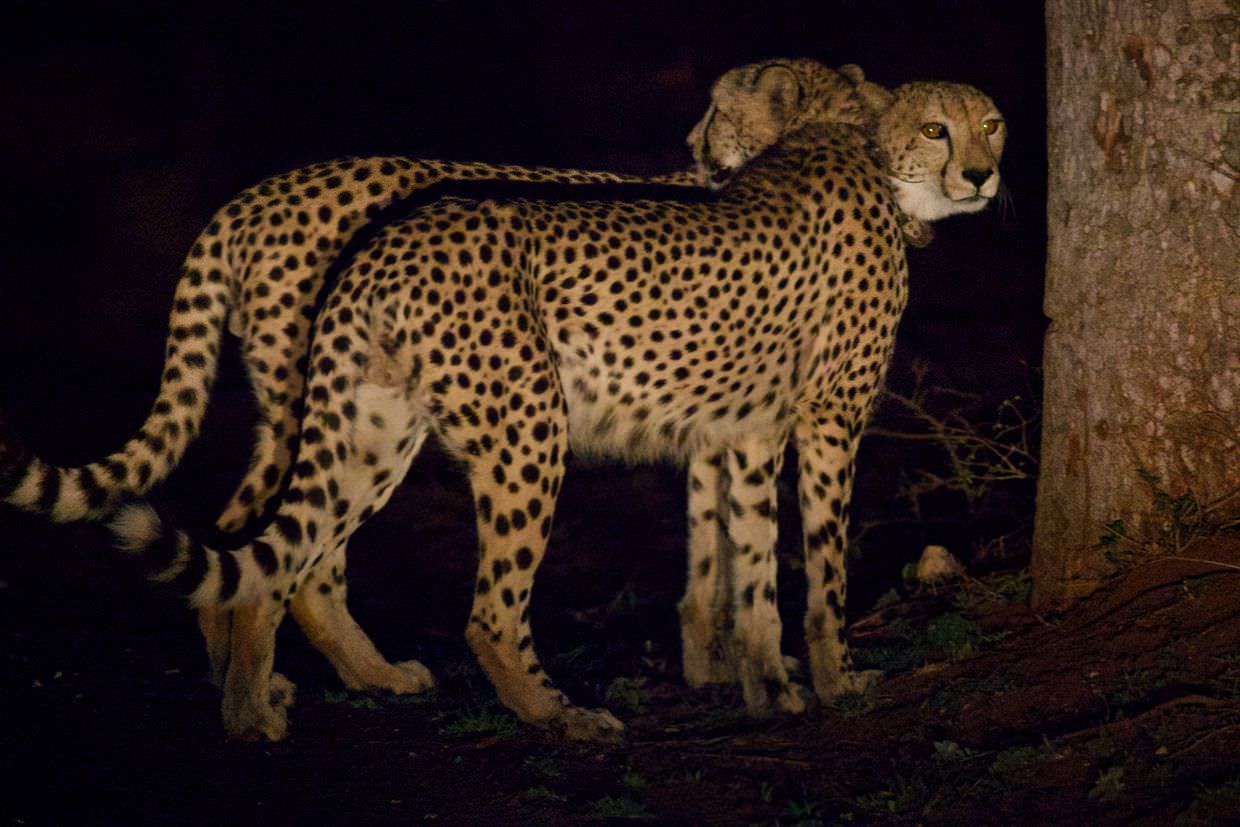
Team Africa is born
We all pitched in to cook dinner. Whether it was luck or fate, “team effort!” was misheard as “Team Africa!”, and that night, in the grubby confines of a volunteer kitchen, a wildlife monitoring task force was born. Like Captain Planet, but not really.